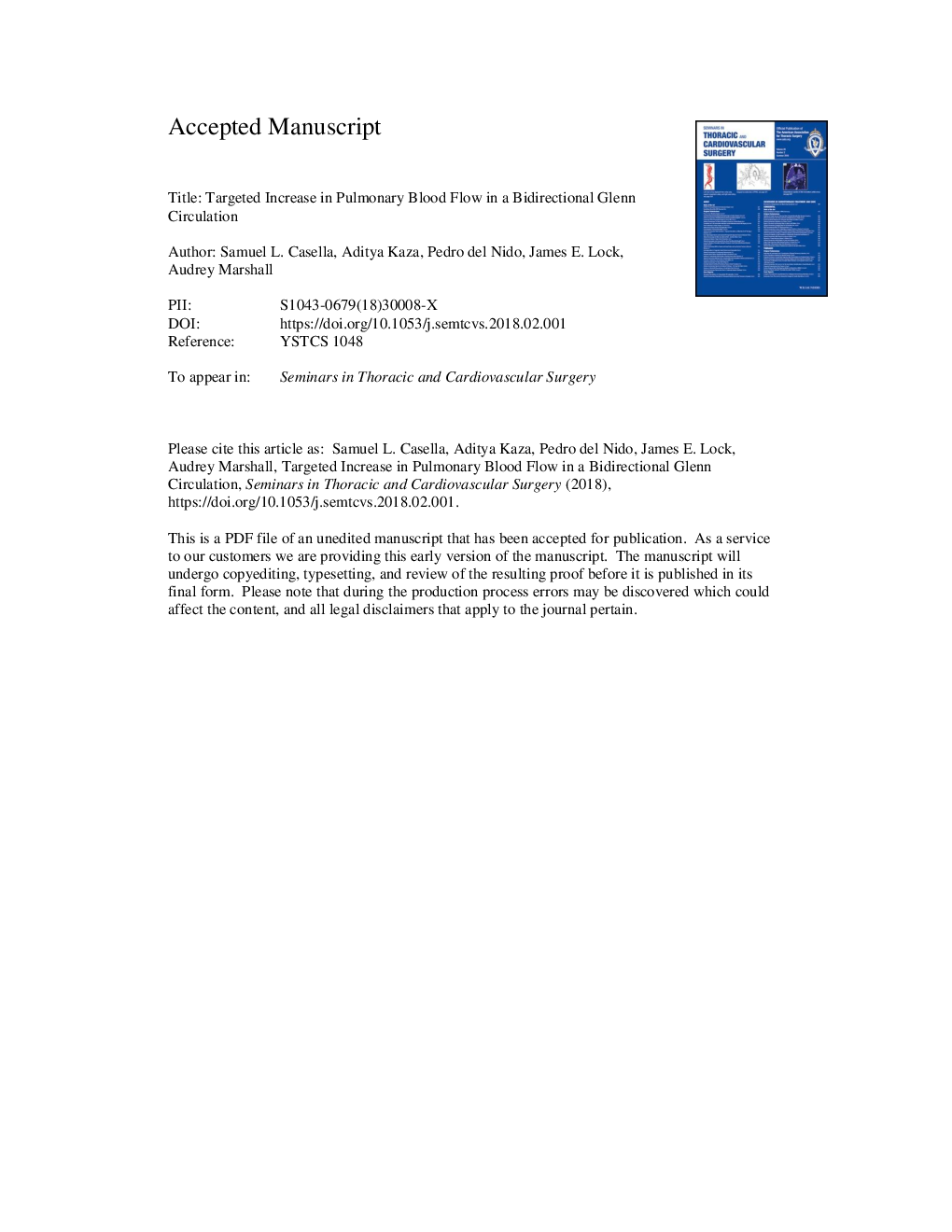| Article ID | Journal | Published Year | Pages | File Type |
|---|---|---|---|---|
| 8679037 | Seminars in Thoracic and Cardiovascular Surgery | 2018 | 29 Pages |
Abstract
In patients with a Glenn shunt and unilateral pulmonary vascular abnormalities, supplemental pulmonary blood flow may improve antegrade flow in the target lung and may permit eventual Fontan completion, while mitigating the risks of uncontrolled additional flow to the contralateral lung. We attempted this by inserting a small aortopulmonary shunt into the affected pulmonary artery and banding the central pulmonary artery. We performed a retrospective review of all patients who underwent this procedure from 2000 to 2015. Comparisons of nonparametric variables were performed with the Wilcoxon signed rank test. Twenty patients were followed for a median of 36 months. Vascular abnormalities included recalcitrant unilateral pulmonary arterial (nâ=â8) or venous (nâ=â5) obstruction or hypoplasia, combined disease (nâ=â4), or abundant aortopulmonary collaterals (nâ=â3). Nine had retrograde flow from the affected lung. The most frequent complications were pleural effusions (nâ=â4) and shunt thrombosis (nâ=â4). Postoperatively, all patients demonstrated antegrade flow to the target lung at the earliest postoperative catheterization. Glenn pathway pressures and saturations were unchanged, whereas the shunted pulmonary arterial oxygen saturation and pressure increased by 4% (Pâ=â0.04) and 6 mm Hg (Pâ=â0.04), respectively. Three patients died; 9 achieved definitive palliation, 4 were deemed to have no improvement, and 4 continue to have a contralaterally shunted Glenn at this time. Targeted additional pulmonary blood flow may be useful for the palliation of single ventricle patients with abnormal pulmonary vasculature. However, morbidity and mortality are common in this high-risk population.
Keywords
Related Topics
Health Sciences
Medicine and Dentistry
Cardiology and Cardiovascular Medicine
Authors
Samuel L. MD, MPH, Aditya MD, Pedro MD, James E. MD, Audrey C. MD,
